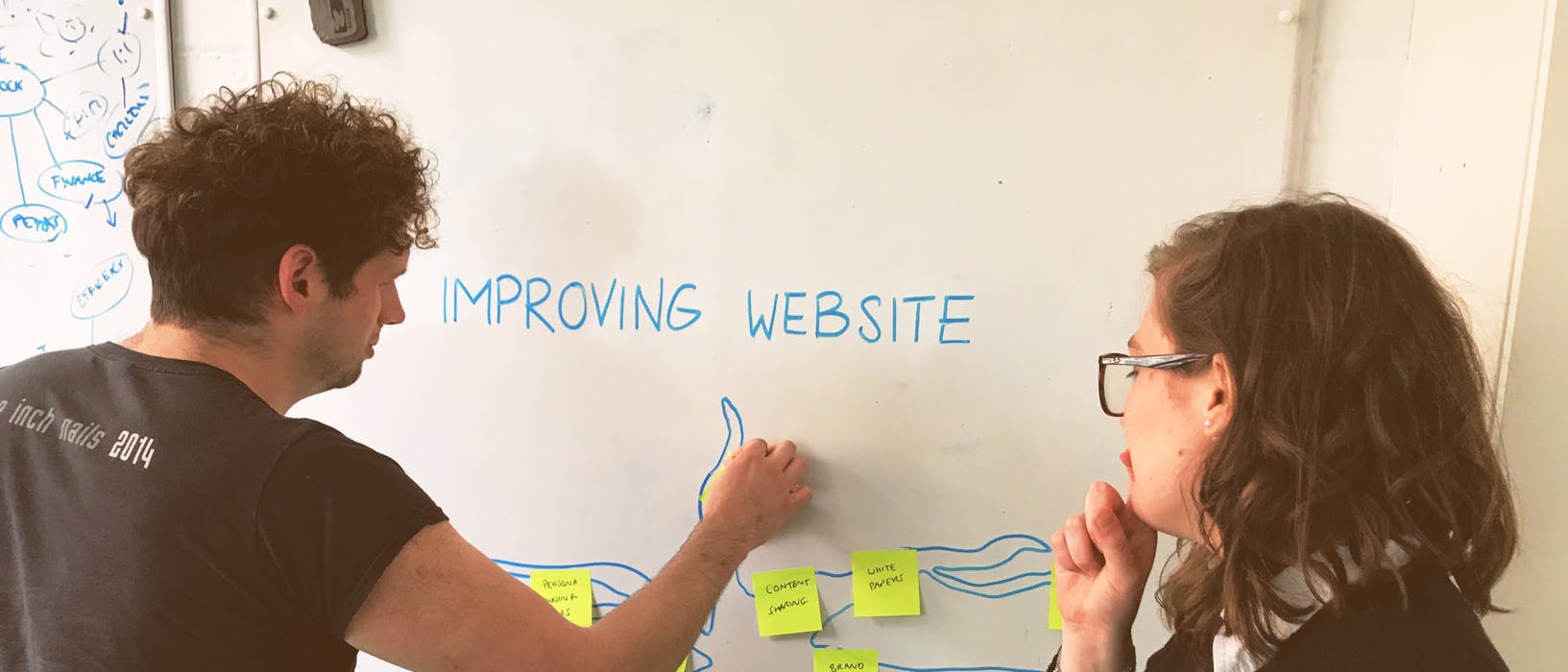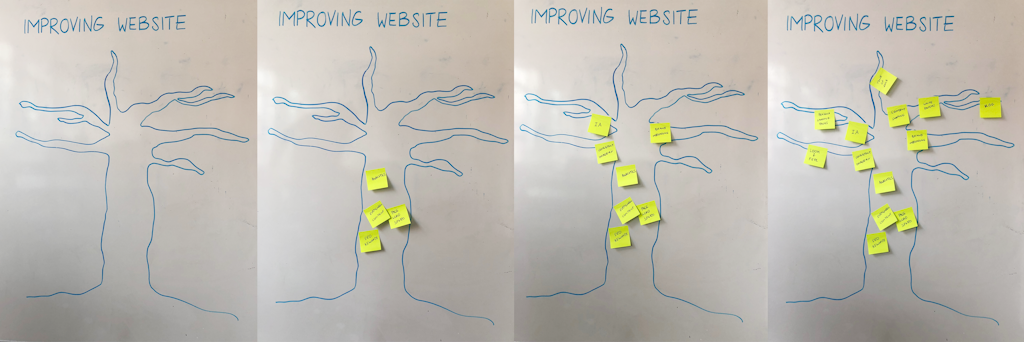By Anna Scandella
UX Designer, Data and PO, Pocketworks
January 15, 2020
Updated March 7, 2021
Streamlining Customer Experiences
The Olive Tree: a tool for discovery workshops



If you're a designer, you'll appreciate that design workshops are incredibly helpful to gain an in-depth knowledge of your clients’ business. One of the main challenges while running one of them is how to keep the audience engaged and making sure that no one is wasting time.
One of our favourite exercise to "break the ice" and create some interesting discussions is The Olive Tree. People who work in an organisation will know that it isn’t always easy to explain what the next goals are for your business and it becomes even more difficult when you’re trying to explain it to someone not familiar with your story and background.
As designers, we have to find an effective way to gather all this information. The Olive Tree is a simple exercise that allows you to shape all your clients’ future strategic steps, one post-it at a time.
Step 1: Setting up
Before the meeting, prepare some post-it on the table (you can also cut them into the shape of leaves) and draw a tree on a board that has to be visible to everyone. Don’t forget to add enough limbs for all the categories you want to tackle.
Step 2: Defining the roots
Once you’re ready, tell the group that the roots of the tree represent the things that they are sure of and the further away from there they move, the more hypothetical things become. For example, if you’re trying to define your target audience, content on the roots and in the inner part of the tree would be about personas that have already been confirmed by data research.
Step 3: Shaping the future
After understanding what the starting point is, it’s time to dig deeper into what your clients want to achieve and what are their ambitions. Post it on the limbs would be about new categories that the business want to engage and at this stage, people should write about those topics.
Conclusion
Discuss the shape of the tree that emerges, which branches stimulate most of the ideas? Which areas seem to be ignored? The Olive Tree is a powerful tool because it can be used to define new features to a product, but also to understand any other aspects of your organisation. It encourages people to “go out on a limb” with their ideas for the future and gives designers a clearer picture of what the future should look like making it easier to prioritise the next steps.
About Pocketworks
Pocketworks design, develop and scale mobile apps for sustainable brands. We help them create organic customer growth and maximise top-line revenue. Tap into our education, consultancy and app development services.
Subscribe to the newsletter
Be the first to read our articles and get fortnightly tips on app research, development and growth.

